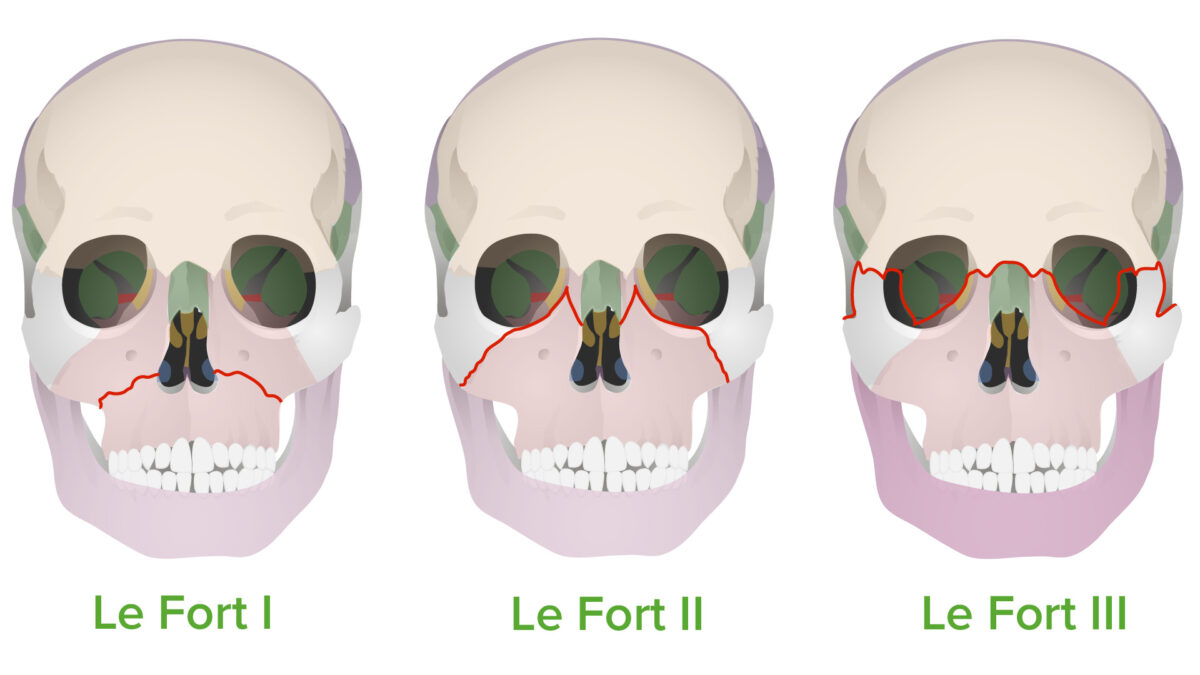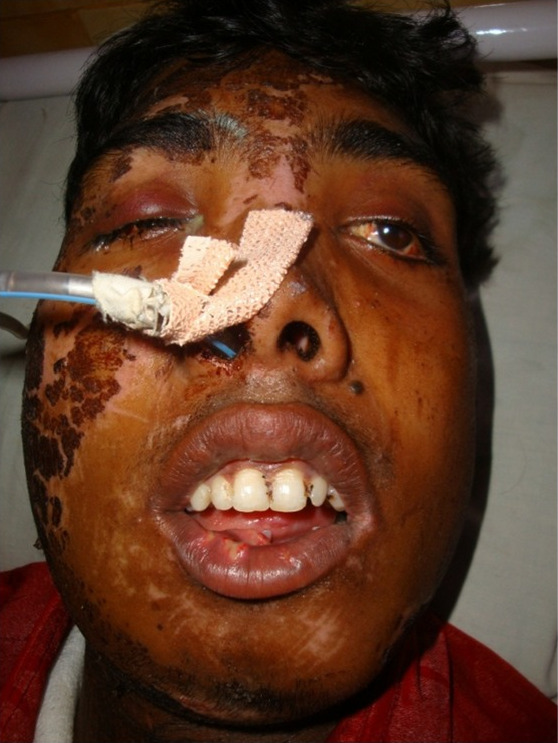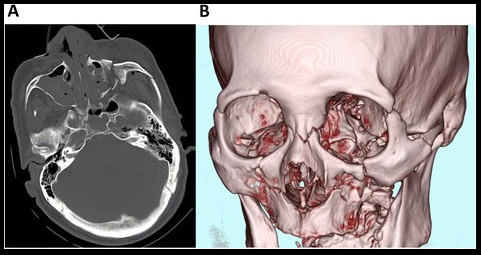Le Fort fractures are a group midface fracture Fracture A fracture is a disruption of the cortex of any bone and periosteum and is commonly due to mechanical stress after an injury or accident. Open fractures due to trauma can be a medical emergency. Fractures are frequently associated with automobile accidents, workplace injuries, and trauma. Overview of Bone Fractures patterns classified into 3 types: Le Fort I, II, and III. Le Fort fractures represent 10%–20% of all facial fractures and can be caused by any significant blunt trauma to the face, most commonly from motor vehicle accidents Motor Vehicle Accidents Spinal Cord Injuries. Clinical presentation includes severe facial bleeding and edema Edema Edema is a condition in which excess serous fluid accumulates in the body cavity or interstitial space of connective tissues. Edema is a symptom observed in several medical conditions. It can be categorized into 2 types, namely, peripheral (in the extremities) and internal (in an organ or body cavity). Edema and mobility of different bone Bone Bone is a compact type of hardened connective tissue composed of bone cells, membranes, an extracellular mineralized matrix, and central bone marrow. The 2 primary types of bone are compact and spongy. Bones: Structure and Types segments, depending on the type in question. Diagnosis is clinical, supported by imaging techniques. Initial management centers around stabilization of the individual and control of bleeding. Definitive management is surgical. Long-term management concerns preservation and rehabilitation of facial function.
Last updated: Dec 15, 2025

Le Fort fracture types:
These fractures follow the “lines of weakness” proposed by Rene Le Fort in 1901.

Individual with a Le Fort III fracture:
Note the widening of the intercanthal space and pronounced facial edema. The ED physicians opted for a secure airway through the nose.

Craniofacial CT (A) and 3-dimensional reconstruction (B) of an individual with a Le Fort III fracture
Image: “Craniofacial computed tomography scan obtained on arrival.” by Momoko Mishima, Tetsuya Yumoto, Hiroaki Hashimoto et al. License: CC BY 4.0